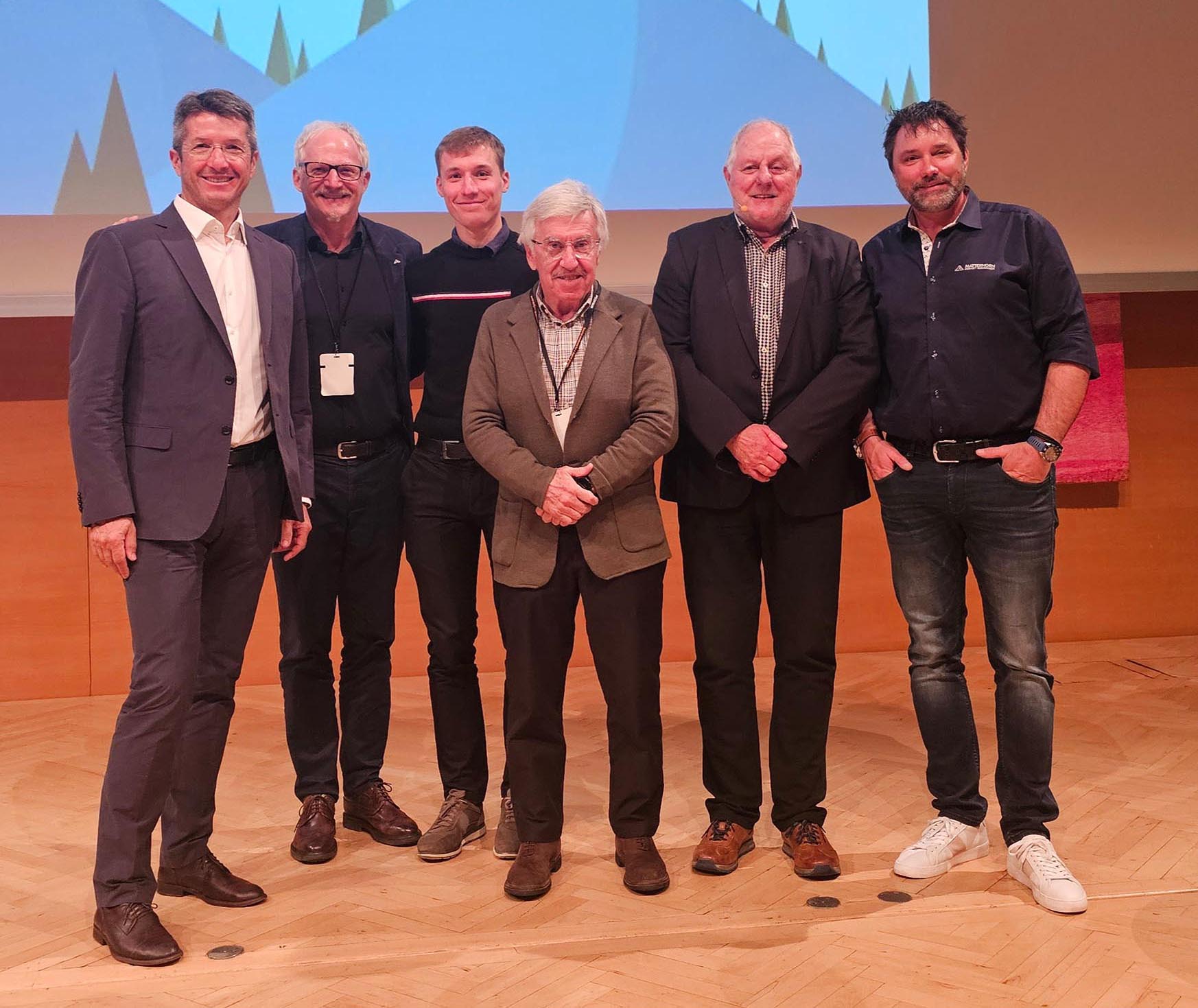
AI – Is the Cable Car World Facing a Structural Break?
(AI = artificial intelligence)
Papers available at
oitaf.org/dokumente/papers-of-oitaf-seminars/
oitaf.org/DEU/dokumente/referate-der-oitaf-seminare/
oitaf.org/ITA/dokumente/relazioni-seminari/
oitaf.org/FRA/dokumente/exposes-seminaires/
oitaf.org/ESP/dokumente/ponencias-de-seminarios/
Within the framework of the international INTERALPIN exhibition held at the Congress Center in Innsbruck, the Seminar “AI – Is the Cable Car World Facing a Structural Break” organized by OITAF’s Expert Committee III “Electrical components and modules in ropeway installations” took place on May 7, 2025. It was attended by more than 200 participants from more than 20 countries. Thanks to simultaneous interpretation, they were able to listen to the presentations in four languages. The Seminar was chaired by Erich Megert of Sisag AG (CH) who also heads the Expert Committee.
The event was kicked off by Dipl.-Ing. Günter Tschinkel, Head of Electrical Engineering at Leitner AG, who presented the historical background of AI with all the opportunities and risks resulting from AI. Next up was Dipl. Ing. Léo MAISONOBE of the French ropeway authority STRMTG with an overview of AI applications in road transport systems where the requirements to be met by AI are even much more complex than in the ropeway industry. He also listed the common features of AI in road transport and ropeway systems.

It was interesting to listen to the operator’s point of view on AI presented by Fabian IMBODEN, the head of operations of Zermatt Bergbahnen AG (CH), one of the first ropeway operators that introduced AI monitoring in the unloading area of chairlifts with consistently positive experiences made in unmanned operation in the following years. He also described all the aspects that need to be taken into consideration to apply this system, not least passenger expectations.
After a break, Dipl.-Ing. Marco Zgraggen of Sisag AG (CH) continued with AI-supported software development, engineering and operating. In the field of operation monitoring, planning and strategy, for example, AI can be used to predict passenger flows for installations, ski runs and restaurants as well as maintenance and energy needs on peak days.
The next subject was the use of AI in ropeways, specifically the transformation from operator experience to AIdiscussed by Carl Biagosch, MSc (ETH Zurich) of the start-up Mantis Ropeway Technologies and Dipl.-Ing. Jari Höck of Doppelmayr Seilbahnen GmbH. They described the development of the system starting with an image database and image analysis of passengers disembarking from chair lifts in 2018 up to the present day. The system replaces the supervisory staff at the unloading station. Eight installations have already been implemented and another eight are planned for 2025. The system is based on cameras having multiple viewing angles that, together with artificial intelligence and computer vision algorithms, analyze the unloading process and ensure safety by triggering slow-downs or emergency stops as needed. The most recent development for chair lift monitoring was briefly mentioned: Its aim is to stop the installation in case of passenger mistakes during loading or when passengers are not seated properly while the relevant chair is still in a safe area so that passengers might not fall too deep. This considerably improves safety – always in combination with the presence of staff – in the loading terminal. The speakers also touched the consistently positive experiences made at unmanned gondola lift stations.

The last presentation by Dipl.-Ing. Fabrice Aubouy of Bluecime (FR) and Dr.-Ing. Mathieu Babaz of Poma (FR) focused on AI-based innovations in image recognition. It addressed the positive experiences made in their application in addition to monitoring by operating staff at chair lift terminals. AI is used to check that restraints are correctly closed and passengers are properly seated at a certain point after loading. This system was also applied at many older installations. During the subsequent discussion, the question was raised whether there were statistics showing a reduction of accidents in the loading area of chairlifts provided with this system as compared with installations not having this system. The two speakers admitted that such a systematic comparative study had not been carried out so far, but would be interesting.
It was a highly informative seminar that was professionally prepared and organized by the chairman of Expert Committee III, Erich Megert.

Photos: C. Mantona/Mountain Manager